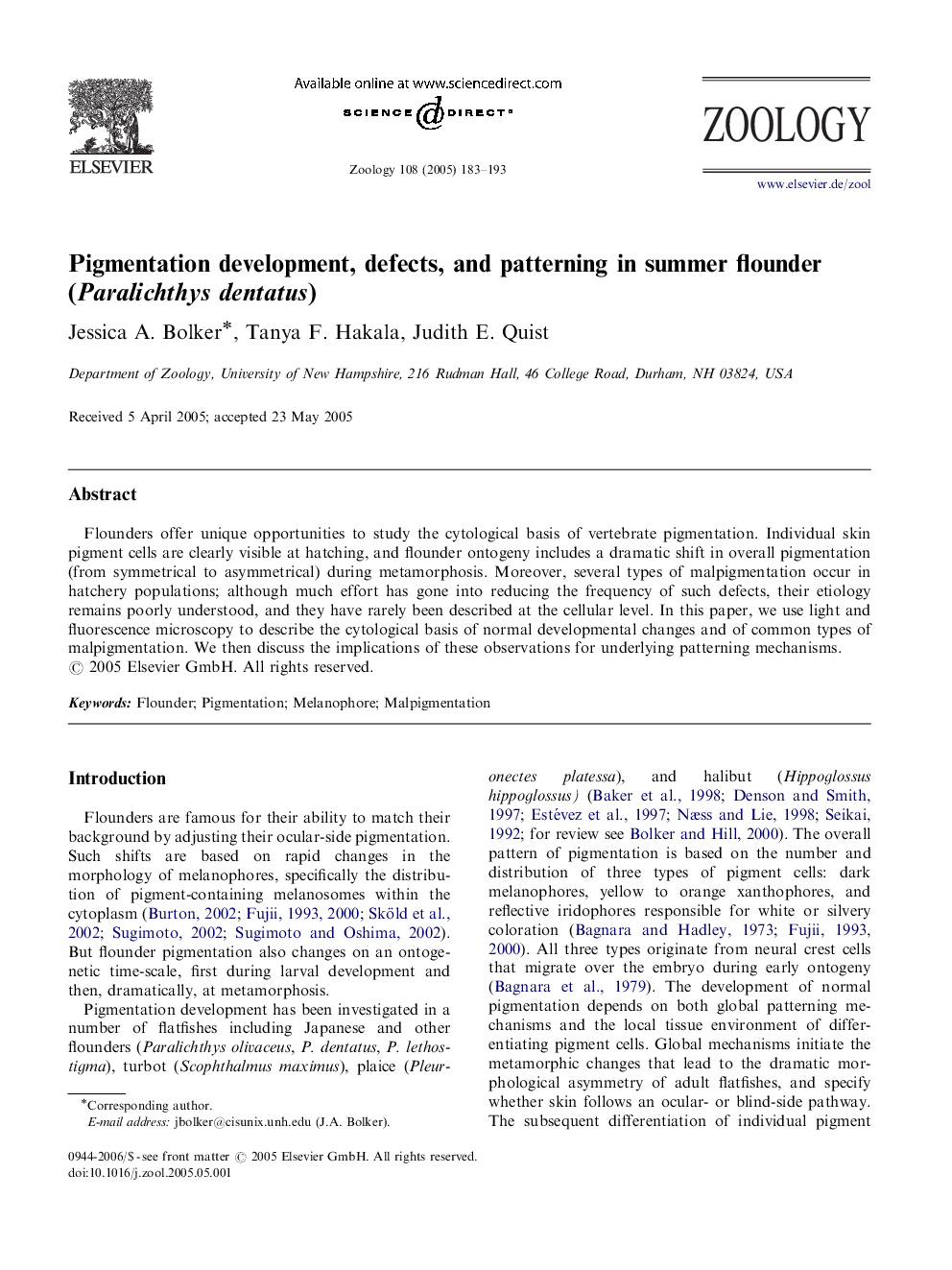| Article ID | Journal | Published Year | Pages | File Type |
|---|---|---|---|---|
| 9110028 | Zoology | 2005 | 11 Pages |
Abstract
Flounders offer unique opportunities to study the cytological basis of vertebrate pigmentation. Individual skin pigment cells are clearly visible at hatching, and flounder ontogeny includes a dramatic shift in overall pigmentation (from symmetrical to asymmetrical) during metamorphosis. Moreover, several types of malpigmentation occur in hatchery populations; although much effort has gone into reducing the frequency of such defects, their etiology remains poorly understood, and they have rarely been described at the cellular level. In this paper, we use light and fluorescence microscopy to describe the cytological basis of normal developmental changes and of common types of malpigmentation. We then discuss the implications of these observations for underlying patterning mechanisms.
Keywords
Related Topics
Life Sciences
Agricultural and Biological Sciences
Animal Science and Zoology
Authors
Jessica A. Bolker, Tanya F. Hakala, Judith E. Quist,
